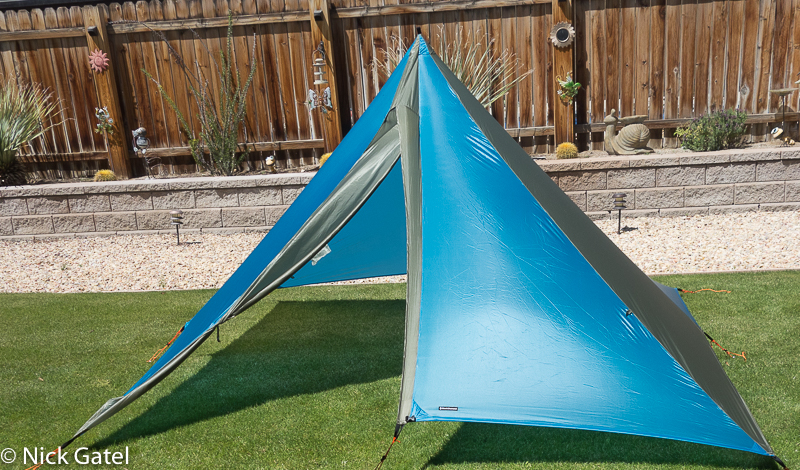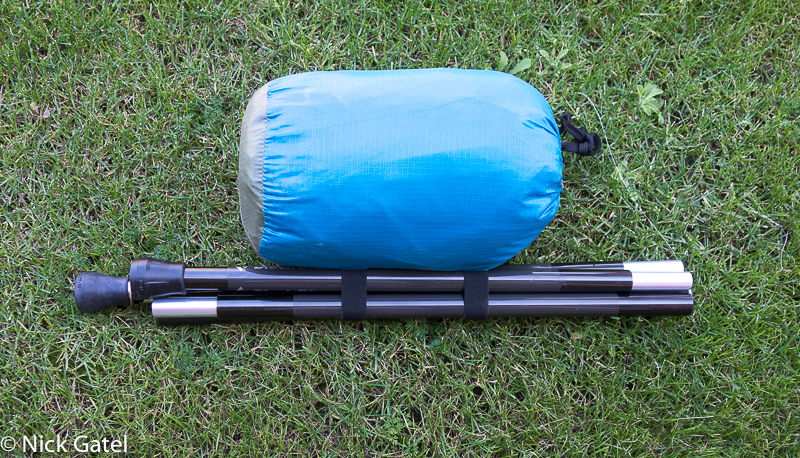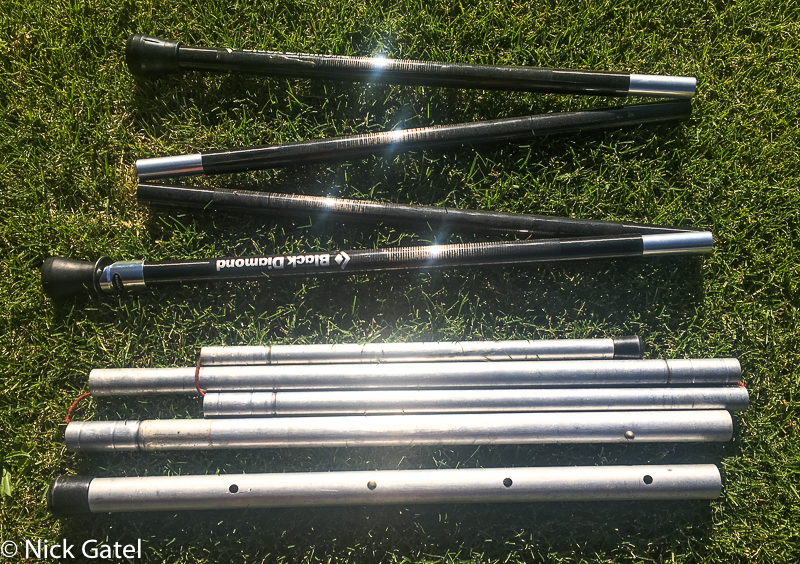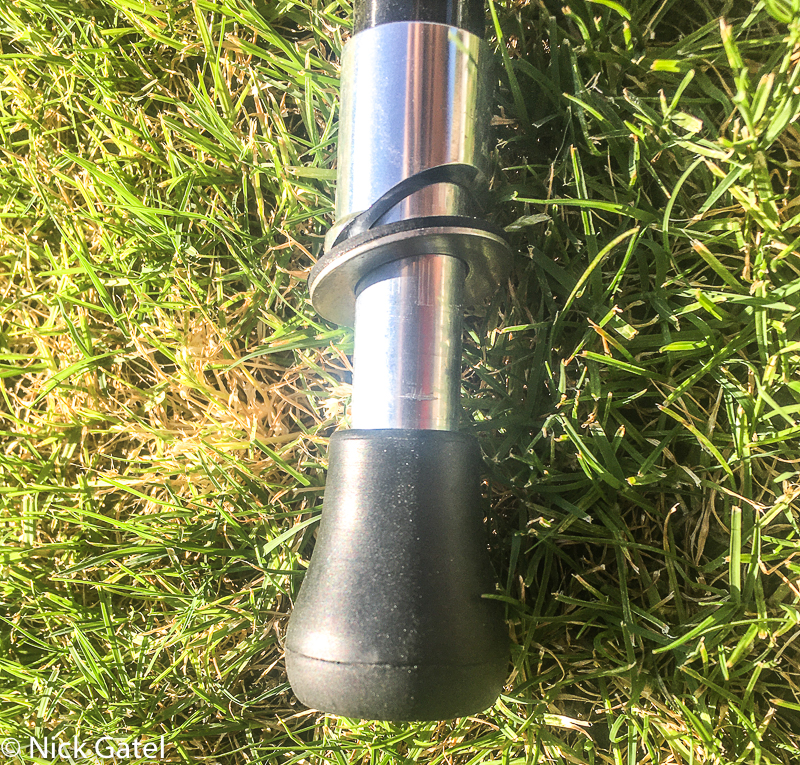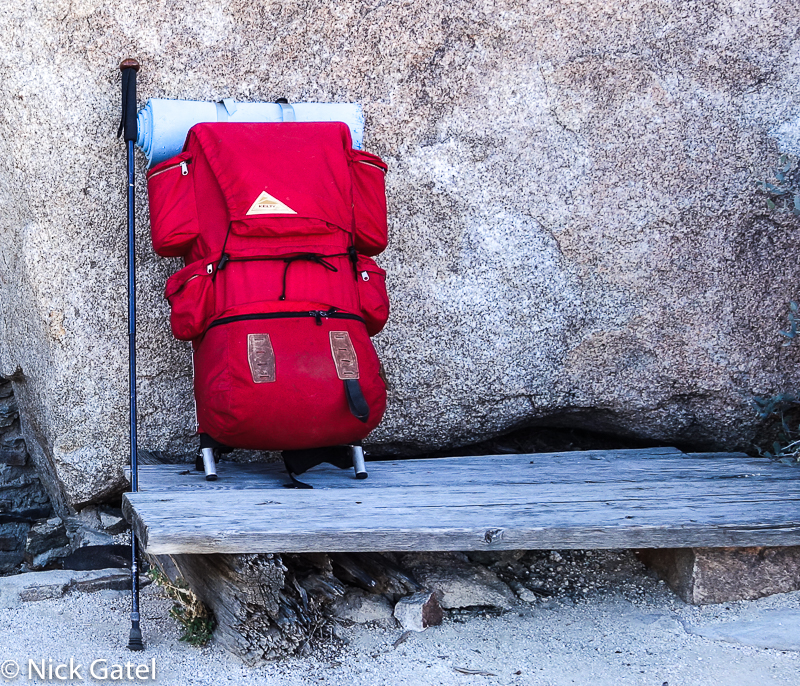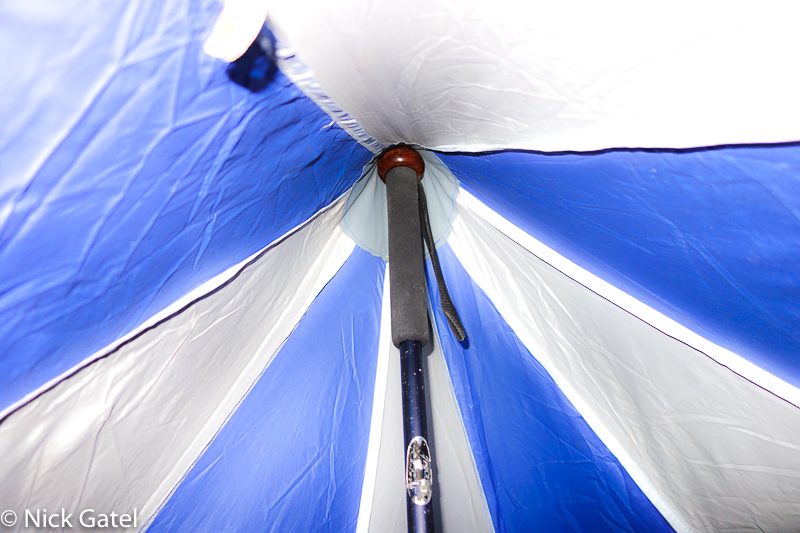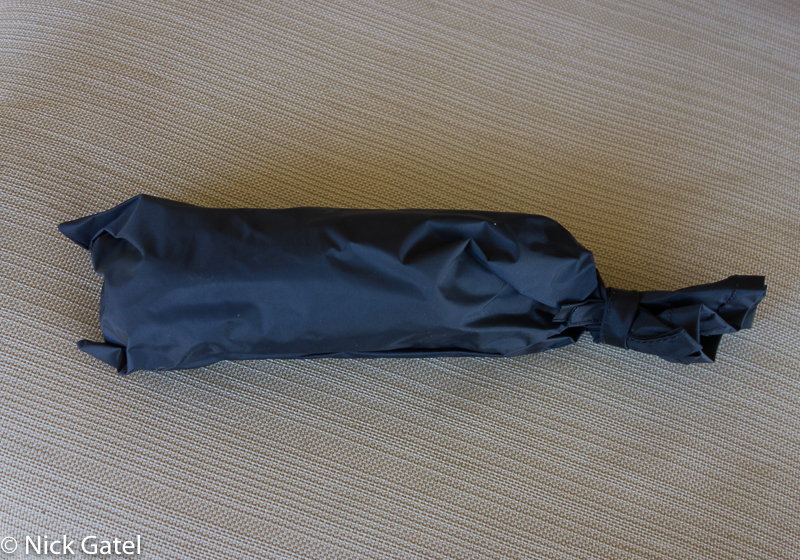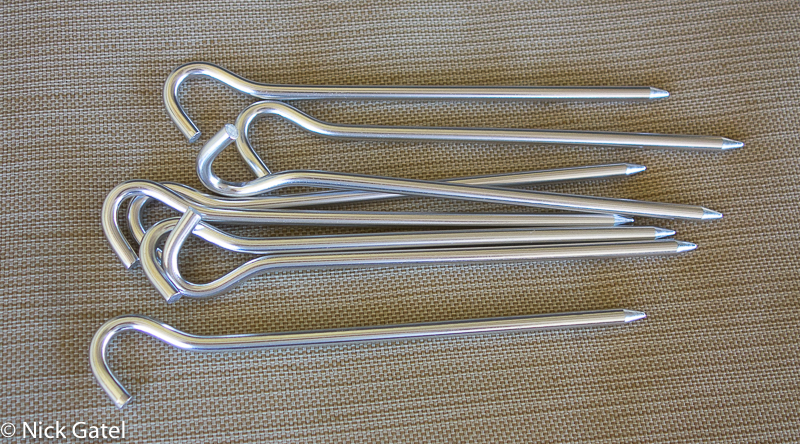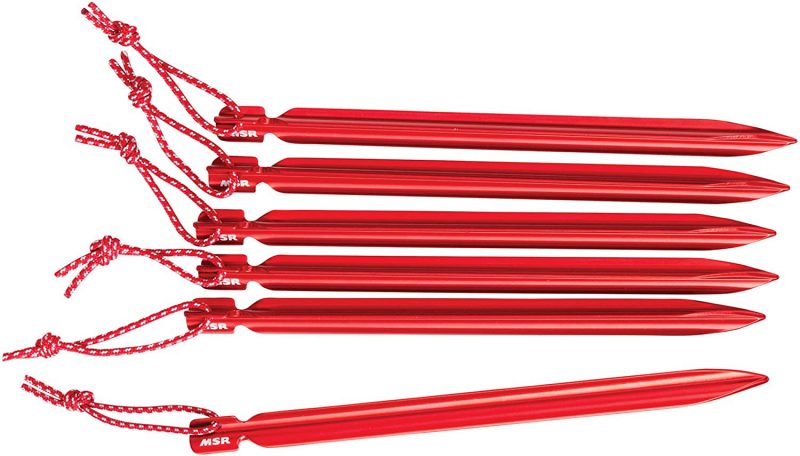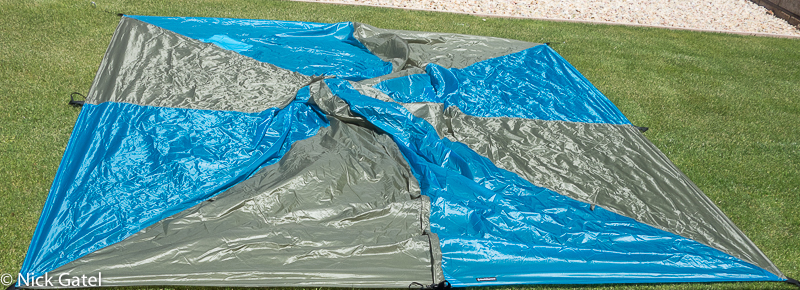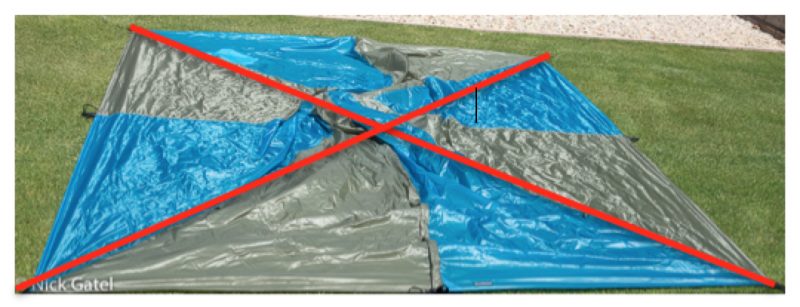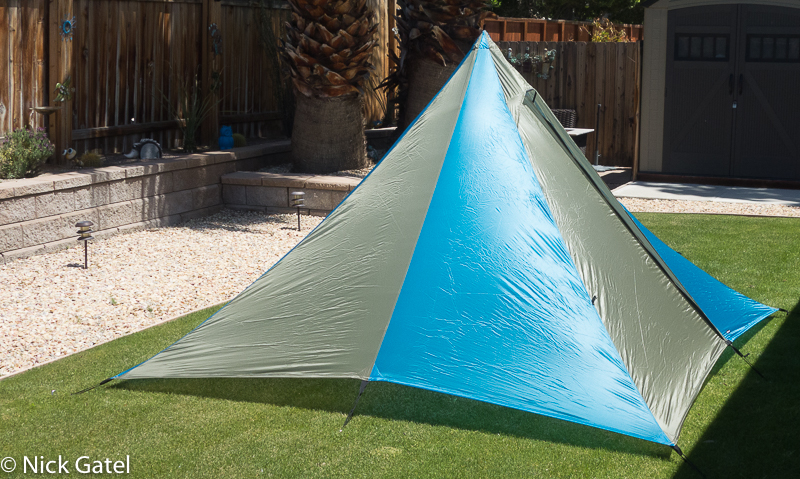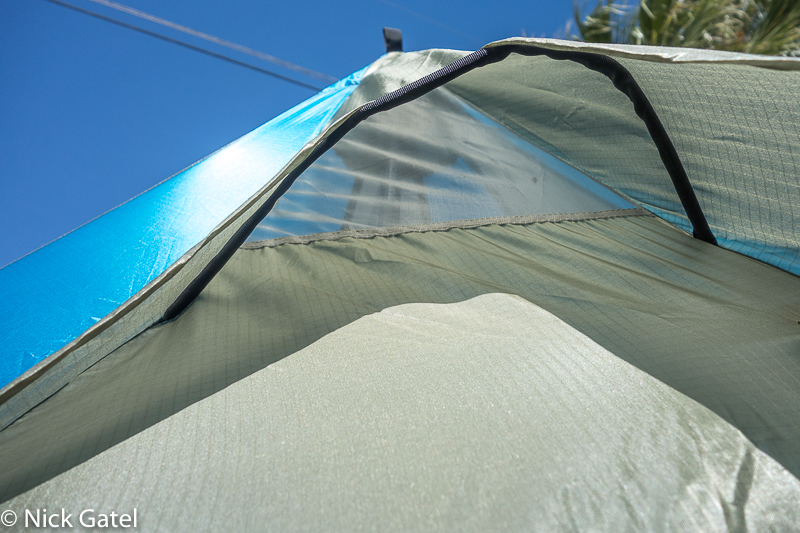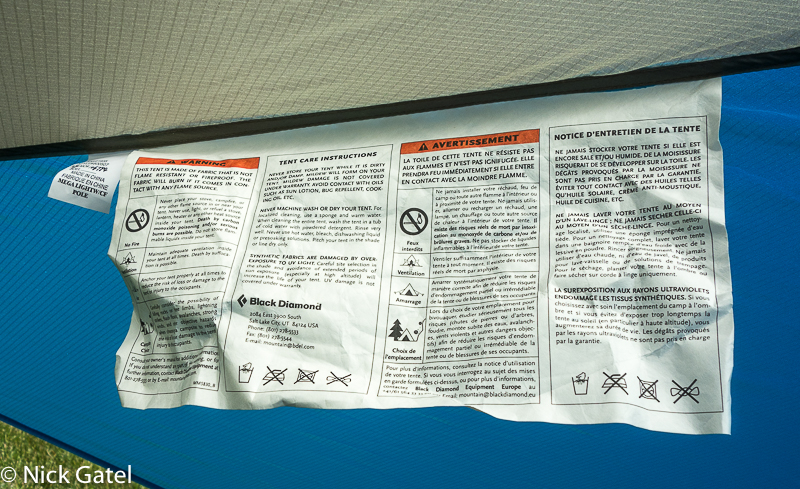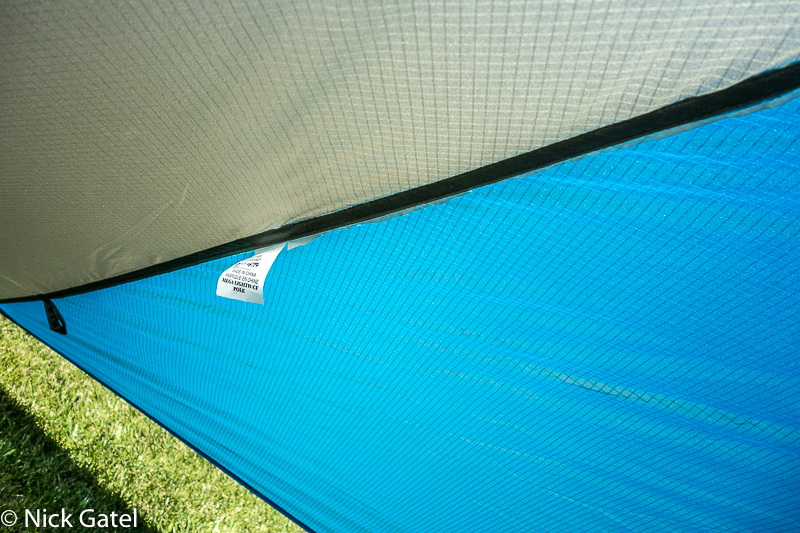Time to write about something other than our house remodel. Since we are forced to stay at home, I can’t go backpacking or camping for a while; thus I can’t share any trip reports. Writing trip reports are a pain in the ass anyway, something I have mostly quit doing the past few years.
This isn’t a review. In my opinion, a review requires several years of use, or a few hundred days/nights of use. For that reason, I find most gear reviews of limited value. Often I find gear reviews useless.
This is a Shelter Comparison
A couple weeks ago, I wrote about the death of my 35-year old Chouinard Pyramid shelter. I haven’t buried or cremated the shelter (a.k.a. throwing it into the trash can). I may resurrect it from the dead and give it life again. In that post, I mentioned my desire to replace it with something identical or close to identical. I also mentioned the Black Diamond (the successor to the original Chouinard Equipment Company) Mega Light looked to be a direct replacement (or closer to the original than anything on the market).
One thing I was unsure about was the physical length of the sides. In that post, I stated,
The specifications show it is 86” X 86” at the base, however I suspect it might be larger, and those dimensions are the actual living area (you can sleep next to the side, because of the slope). The specs say the total coverage is 81 square feet, which is 9 feet X 9 feet, which would be 108 inches X 108 inches. This probably is more than the length because when pitched the fabric is above the ground. So I’ll guess the dimensions are pretty close to the original. I’ll have to call Black Diamond.
The Purchase
Instead of calling Black Diamond to verify the dimensions, I just ordered one from Amazon who had the best Internet price at the time. If it was too small, I planned to return it. When it arrived, I opened it up and verified it was indeed 108 inches on each side. Looking it over, I decided to keep it.
If you recall from my post about the Chouinard Pyramid, I presented a comparison chart of similar shelters.
I bought my Mega Light on Amazon a couple weeks ago and the price was $239.96
Stuff Sack
The shelter’s stuff sack comes with two elastic loops to hold the carbon fiber center pole, just like the original Chouinard. And as I did with the Chouinard, I cut off the elastic straps.
Center Pole
The shelter comes with a carbon fiber center pole. Most of the other pyramids I looked at charge extra for a pole.
The pole at the top of the picture is the Mega Light’s included carbon fiber pole. The aluminum pole set below it is the Chouinard’s pole set.
Center Pole Height Adjustment
Chouinard Center Pole
 Note that the very bottom aluminum pole section has holes in it, and the pole above it has a button. The Chouinard center pole can be adjusted in 3.75 inch increments, and the included stake tie-outs (similar to the Mega Light) aren’t easily adjustable.
Note that the very bottom aluminum pole section has holes in it, and the pole above it has a button. The Chouinard center pole can be adjusted in 3.75 inch increments, and the included stake tie-outs (similar to the Mega Light) aren’t easily adjustable.
Mega Light Center Pole Adjustment
The Mega Light center pole has a nifty adjustment mechanism. An angled washer creates a friction lock. By pulling the bottom section downwards, the washer is slid up to lock against an angled cut in the next pole section.
Pole Weights
Carbon fiber poles are usually lighter than aluminum of similar strength. I was surprised when I weighed this pole versus the original Chouinard center pole.
- Black Diamond Mega Light center pole = 11 5/8 ounces
- Chouinard center pole = 10 3/8 ounces
Optional Poles
The shelter comes with an adapter to connect two trekking poles to create a center pole, instead of carrying an extra, dedicated center pole.
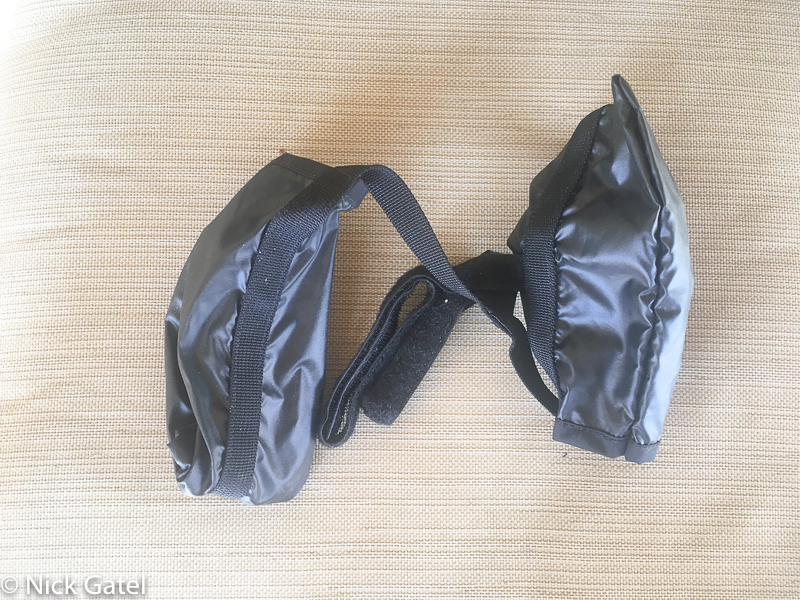
I never use trekking poles anymore. I gave up on them about years ago. There is one exception: I use them with optional snow baskets when traveling on snow. However on snow trips, I often leave my shelter up as a base camp, and explore during the day, so it doesn’t work out to use them as a center pole. I didn’t bother to weigh the adapter, nor did I connect two trekking poles, because I will never use the adapter.
I’ll be using the Chouinard pole when I need a center pole, but most of the time I’ll be using my Tracks Hiking Staff, which has a maximum length of 57 inches versus the approximate height of 66 inches for the shelter. I fabricated a bottom pole jack from PVC pipe to gain the extra height. I’ve been using this staff for around 35 years.
Stakes
The shelter comes with eight aluminum old-school 7-inch stakes, weigh ½ ounce each and are packaged in a heavy-duty nylon bag.
Instead of these stakes, I’ll be using 7.5 inch MSR Groundhog “Y” stakes. These stakes hold better and weight virtually the same.
Set Up
Of course you should set up a tent or shelter when you first get it, to inspect it for quality. Some shelters require the seams to be sealed, and this is the perfect time to do it.
At first, many people have difficulties pitching any tent that is really a shaped tarp, like pyramids or almost any that are called a “mid.”
Steps
This applies to almost any “mid” style shelter to include 4, 5, or more sides. An exception is the Mountain Laurel Designs TrailStar, because it doesn’t have a zippered door.
The first step is to layout the shelter on the ground and stake the corners of each side, which in the case of the Mega Light, is 4 corners.
The stakes need to run in line with the corner seams.
In the picture above, the upper right corner doesn’t look like it is lined up, but it is because the panel has a lot of loose material when laid out on the ground.
The second step is to unzip the opening and insert the pole, adjusting it so the shelter is taut on all four corners.
The third step is to set the stakes in the center of each side.
You can see that the bottom edge of the shelter has a curve, which is normal for a lot of pyramid shelters, because when the first four stakes are set and the pole is inserted, there is a LOT of tension on the fabric at each corner. You want this. A lot of tension is important with a mid-style shelter, because there is only one supporting pole. If you try to make the sides parallel to the ground, you can’t give it enough tension to keep it stable in the wind. Take a look at the three pictures below:

These are single walled shelters and condensation can be a problem in colder weather. The higher it is pitched, the less condensation in the interior. I like mine fairly high as it also provides more interior space along with better ventilation. On the other hand, it can allow more wind into the shelter or spindrift to enter in a snowstorm. Keep in mind this isn’t a mountaineering tent designed for extreme weather. Pyramids that are used in more severe winter weather have a sod cloth (or snow flaps) sewn to the bottom to keep out snow; many can be fitted with a wood burning stove with a chimney that goes through the top of the shelter material. Choose your shelter to match the conditions.
Venting
Unlike the Chouinard, the Mega Light incorporates a vent at the top of the shelter. This will be a significant improvement over the Chouinard, which has no vent. Several decades ago I spent one clear, crisp night in Joshua Tree NP, where the temperature dropped down to 20F. In the morning the interior of the shelter was covered in a sheet of ice.
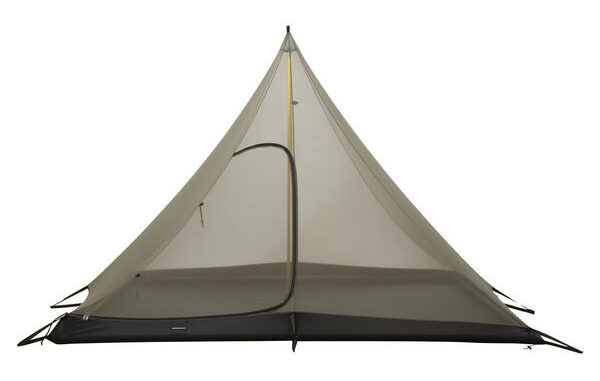
Black Diamond does sell an inner for this shelter, made from netting and includes a “bathtub” floor. It is marketed as a bug shelter, and weighs over 2 lbs, which is more than the shelter alone! For condensation mitigation, a thin solid and breathable cloth works better than netting. Combining the Mega Light with the inner would be too heavy for backpacking, and more useable as a car camping shelter. Plus it could be used as a stand-alone bug shelter when insect pressure is great, and the weather is nice.
All my shelters, except my winter Scarp 1, are single-walled, floorless shelters. They work for me, bugs don’t bother me, and I have no concern about anything that could possibly crawl into the tent – which never happens – except for occasional bugs.
Tie-Outs
The shelter comes with cross-grain webbing and nylon ties at each corner and one between each corner (8 total). This is the same as the Chouinard. However the Mega Light is going to be more susceptible to wind (I’ll explain later), and I might have to add some ties midway up each side. The included ties could be used for adjustment, but would be a pain in the ass.
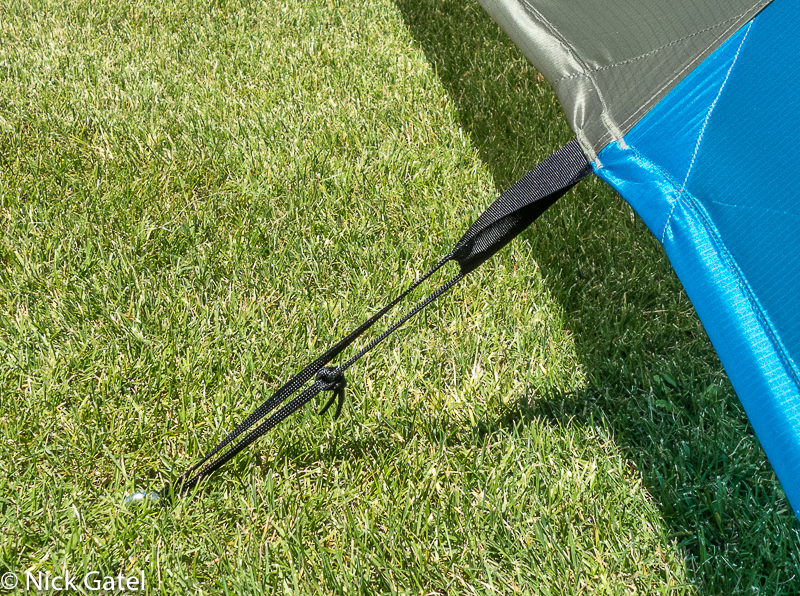
I replaced the nylon tie with 3mm cord and LineLoc 3 tensioners. This will make it easier to adjust and quicker to set up. I had done the same thing with my Chouinard years ago.
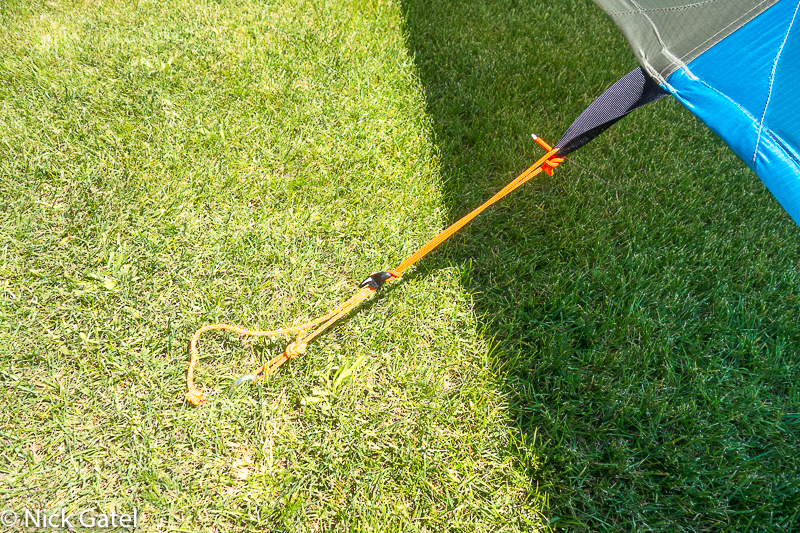
You Might Die Label
Inside was this big honkin’ label. There was no text saying I would violate any Federal or State law by removing it, so I cut it off, leaving the smaller tag (which I didn’t bother to read). Hopefully I won’t be arrested for violating some remote law put into place to protect me from myself. While I am discussing this, I do cook inside my shelter, allowing for good ventilation and care in lighting stoves and using them inside, because I don’t want to burn down a shelter.
After I removed the tag, I tried to weigh it. With my scale set to grams, it didn’t register any weight.
Material
The Mega Light is made from 30d silicone coated nylon. I do not know what the denier of the Chouinard is constructed from, but it is covered with polyurethane, not silicone. Generally, SilNylon is lighter than PU coated fabrics. SilNylon stretches and PU nylon doesn’t. The Mega Light bows in a little more on the windward side than the Chouinard, when the wind blows. When I set it up, I left up overnight after I seam sealed it. That night we had wind gusts up to 30 mph and it held up just fine. It was nice and taut the next morning when I took it down.
Seam Sealing
Because the shelter is constructed of rip-stop silicone nylon, I needed to seal the seams with silicone. I don’t know of a single company that seam seals their SilNylon shelters, other than a few who do it at an extra charge (usually $35-$50). Also, most companies don’t include the silicone if you want to do it yourself.
Normally I use GE Silicone II caulk and dilute it 1:1 or 1:2 with mineral spirits and use a small brush for application. On my TrailStar I used Permatex Flowable Silicone Windshield and Glass Sealer and it does work well.
Since I had a couple tubes of McNett (now called Gear Aid) Silicone tent sealer from the previous shelters I had purchased and opted to use the GE product instead, I decided to use the McNett product. This silicone is thinner than caulk and doesn’t need to be thinned. I squeezed one tube into a small plastic cup, stirred it with a tongue depressor and started applying it with a small foam brush. By the time I got to the bottom of the container, which was starting to harden, I had sealed about ½ of the shelter. A second tube completed the job.
Weights
Mega Light
After seam sealing the shelter, adding Linelocs and 3mm cord, the total weight of the shelter including the stuff sack (without the elastic straps) was 1lb, 12 5/8 ounces (28.625 ounces).
Chouinard Pyramid
My Chouinard weighs in at 2lbs, 9 ounces (41 ounces). About 30% more than the Mega Light, so obviously the Chouinard (100% nylon) is made from a heavier denier fabric, which also explains why it was affected less by the wind.
Packed Size
SilNylon packs down smaller than PU, plus the Chouinard has a heavier denier than the Mega Light.
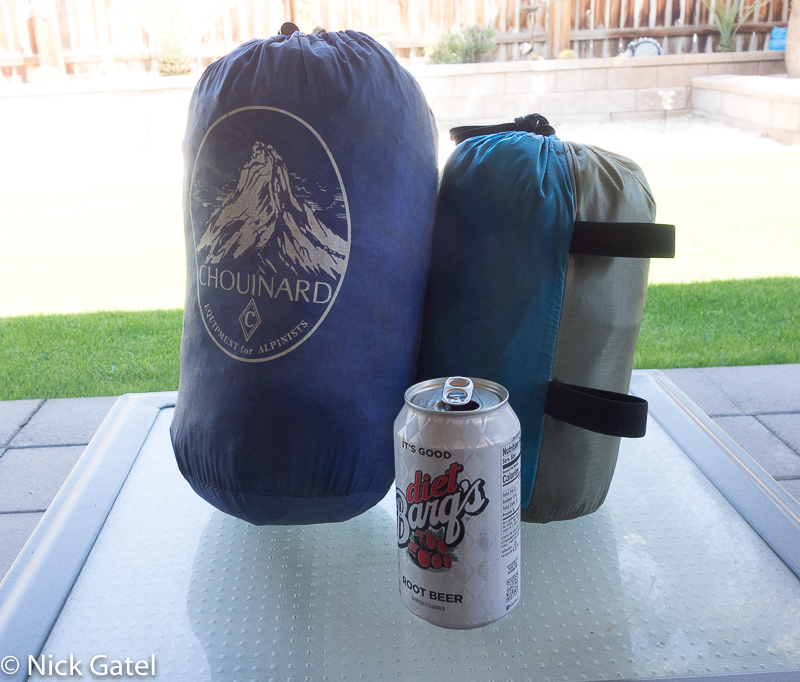
This website may be compensated for linking to other sites or for sales of products. As an Amazon Associate I earn a small fee from qualifying purchases at no additional cost to the purchaser.
